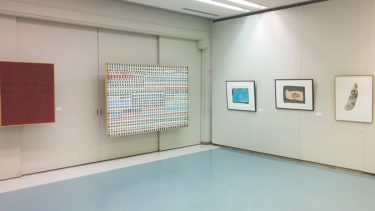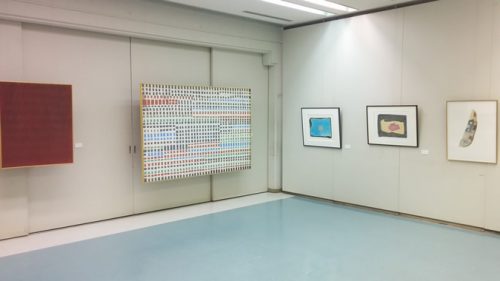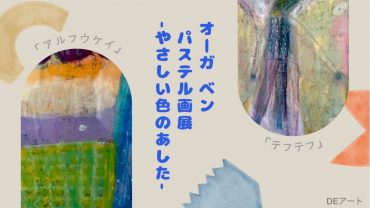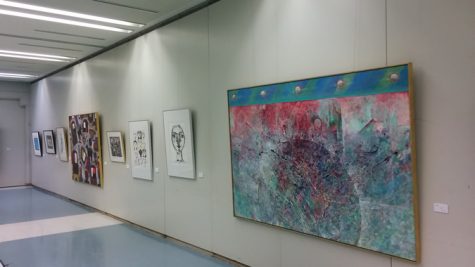このブログでは、子供の頃、美術の授業が好きだった方(もちろん苦手だった方も)
美術館には行くけど、ギャラリーには行ったことがない方
家に絵画や作品を掛けてみたいけど、どうしたらいいか分からない方に向けて、
現代アートをお家で楽しむには、どうしたらいいかをご紹介していきます。
今回、すどう美術館の須藤一郎館長からご協力いただき「すどう美術館 館長のひとりごと」を掲載致します。
みんなわが子
すどう美術館で収蔵している美術作品についてはいくつかのジャンルに分けられます。
一つは菅創吉作品から始まって購入した、46歳の時から会社の終わる62歳までのもので、給与をもらっていた時期の作品です。絵のことはよくわからずに気に入ったものをせっせと買っていたわけですが、結果的には多くが社会的に高い評価をいただいています。菅創吉のように購入前に亡くなっていた画家も一部おりましたが、購入時にはお元気で活躍されていましたのに、その後亡くなられた画家も多く、作品は今も輝いていますが、私が勝手に古典的現代美術と称している作品群です。
次の作品は銀座に進出、お金も時間もなく、とても絵を買う余裕はなかった時期ですが、すどう美術館で展示した画家の作品を支援の意味も含め、いいと思う作品を購入してきた作品群です。展示のお礼といって寄贈いただいたものも含みます。
三つめは町田の自宅美術館の時代から始め、小田原の数年前まで20年近く続けた「若き画家たちからのメッセージ」展で、毎回1~3人の画家にすどう美術館賞の名目で買い上げしてきた作品群。そして四つめが小田原で3回、箱根で1回行った「アーティスト・イン・レジデンス」で国内外の作家を毎回10~12名招待、滞在して制作していただいた作品で、展覧会を開催した後受贈した作品群。ということです。
さて、コレクション展を行ないますと、来場者から時々、館長はこの絵の中でどれが一番好きな作品ですか、という質問を受けることがあります。そんな時私は、どの作品も私のかわいい子で優劣はつけられません、と答えます。一点一点が大事で、どの作品にも手にした時の熱い思いがあります。
ただそうは言いましても、収蔵作品が多くなってしまったうえ、それぞれ作品に個性があり、また展覧会の場所、目的等により、どうしてもたくさん展示の機会を持つ作品となかなかその機会を持たない作品が出てきてしまっています。
展示される作品は会場で輝き、喜びを表すのですが、しまわれていることの多い作品はどうしているのでしょうか。
ここのところ、関係者の協力を得て収蔵作品をケースから一点一点取り出し、確認、チェックのうえ、リスト化し整理しています。するとあまり陽の目を見ていない作品の中にも、ぜひ皆さんに見てほしいと思うのがたくさん出てきてしまいました。
作品はみんなかわいいわが子ですから、こういう子たちにも早くいい展示場所を見つけ、陽を当ててあげたいと、あらためて今、思いを強くしているところです。
すどう美術館 館長 須藤一郎
行き場のない作品、何もない壁
先日恩師と電話で話したところ、80歳を超えたそうだ。3年ほど作品は制作していないとの事だった。しかし、声の元気さにホッとし、会う約束をした。
話によると、作家仲間は他界してしまった方が多く、知り合いのギャラリーも閉じてしまったところは、作品の行先をどうするか困惑しているそうだ。
日本では、美術館でさえ行政からの支援は少なく、やむなく閉館するところがある。そこにある美術品はどこへ行くのだろう?
有名な作家の作品でさえ行く場所を探さなければいけないような状態。
日本には圧倒的に受け皿が少ない。
個人所有やギャラリー所有の作品は、所有者が行先を考えるのだが、愛着のある作品を光の当たる場所へつなぎたいと思うことは同じだろう。
保管場所を確保できればいい方なのが現状。海外へ作品が流れて行ってしまうのには、日本での報われない現状が原因だ。
各家庭に目を向けてみよう、例えば館長のコレクションは約800点ある。800件絵を掛けていない家を探すのは容易だ。
(我が子の通う小学校約500家庭、中学校約500家庭、高校約1500家庭でアンケートを取れば2500家庭分聞くことが出来る)
しかし、1点でもお金を出して絵を掛けようという家を800件見つけることは難しい。
公共施設や病院、学校はどうだろう?何もない壁を見る度、ここに作品があったら、なんて素敵な空間でしょうと思わずにいられない。
ちなみに我が子の通う小学校、中学校、高校では現代アートは掛かっていない。
作品を掛ける壁は余るほどあるのに…。
最後まで読んでいただき、ありがとうございました。
作品との良い出会いを!
DEア ートでした。
協力:写真引用元:すどう美術館

[ Gallery SUDOH director’s monologue ] Part 7 ‟All my children. ”
This blog is for those who loved art classes when they were kids. (Of course, if you weren’t good at it…)
If you go to museums but have never been to a gallery.
For those of you who want to hang paintings and artworks in your home, but don’t know how to go about it.
Here are some tips on how to enjoy contemporary art at home.
This time, with the cooperation of Ichiro Sudo, Director of Gallery SUDOH, I will be posting [ Gallery SUDOH director’s monologue ] .
All my children.
The works of art in the collection of the Gallery SUDOH can be divided into several genres.
The first is the works of Sokichi Suga, which I purchased from the time I was 46 until the end of my career at 62, when I was receiving a salary. I didn’t know much about painting, so I just bought what I liked, but in the end, many of them are highly regarded by society. Some of the painters, such as Sokichi Suga, had died before I bought them, but there were also many painters who were active and healthy at the time I bought them but later passed away.The works still shine, but they are a group of works that I call classic contemporary art.
The following works are from the period when I moved to Ginza and had neither the money nor the time to buy paintings, but I purchased works that I thought were good, including works by artists who exhibited at the Gallery SUDOH, as a way of supporting them. This includes works that were donated in appreciation of the exhibition.
The third is the “Messages from Young Painters” exhibition, which began at my home museum in Machida and continued for nearly 20 years until a few years ago in Odawara, where I purchased the works of one to three artists each time under the title of the Gallery SUDOH Prize. The fourth is the “Artist-in-Residence” program, which was held three times in Odawara and once in Hakone, inviting 10 to 12 artists from Japan and abroad to stay and create works. This is a group of works that were donated after the exhibition.
When I hold an exhibition of my collection, I am sometimes asked by visitors which of the paintings is my favorite. When I am asked this question, I reply that each of the paintings is my own little girl, and that there is no way to rank them. Every piece is important, and every piece has a passion for me when I hold it in my hands.
However, even so, due to the large number of works in the collection, the individuality of each work, and the location and purpose of the exhibition, some works will inevitably have many opportunities to be exhibited and others will not.
The works that are displayed shine and express joy in the venue, but what about the works that are often put away?
Recently, with the cooperation of the people involved, I have been taking out the works from the collection one by one from their cases, checking them, and making a list of them. As a result, I found many works that have not seen the light of day that I would like everyone to see.
All of my works are my own cute children, and I want to find a good place to exhibit them as soon as possible and let the sun shine on them.
Ichiro Sudoh
Works with nowhere to go, walls with nothing.
I spoke to my teacher on the phone the other day, and she told me that she was over 80 years old. She said she hadn’t produced any work for about three years, but I was relieved to hear her voice and promised to meet her.
According to her, many of her artist friends had passed away, and a gallery she knew had closed its doors. They are at a loss as to what to do with their works.
In Japan, even museums receive little support from the government, and some are forced to close their doors. Where do the works of art there go?
Even the works of famous artists have to find a place to go.
There are overwhelmingly few receptacles in Japan.
For works owned by private individuals or galleries, the owner considers the destination, but I think we all want to connect our beloved works to the light.
The current situation is that it is better if you can secure a place to store them. The reason for the flow of works overseas is due to the current unrewarding situation in Japan.
Let’s look at each household, for example, the director has a collection of about 800 paintings, and it would be easy to find a house without 600 paintings hanging in it.
(If we surveyed about 500 families at the elementary school my child attends, 500 families at the middle school, and 1,500 families at the high school, we could ask about 2,500 families.)
However, it is difficult to find 800 houses that are willing to pay for even one painting to be hung.
What about public facilities, hospitals, and schools? Every time I see an empty wall, I can’t help but think what a wonderful space it would be if there were artworks here.
By the way, there is no contemporary art hanging in my child’s elementary, middle, and high schools.
They have more than enough walls to hang artworks on….
Thank you for reading to the end.
Have a good encounter with a work!
This was DE art.
Cooperation:Photo reference:Gallery SUDOH
Translated with www.DeepL.com/Translator (free version)


